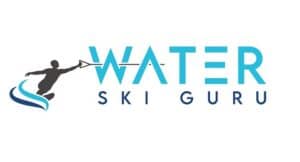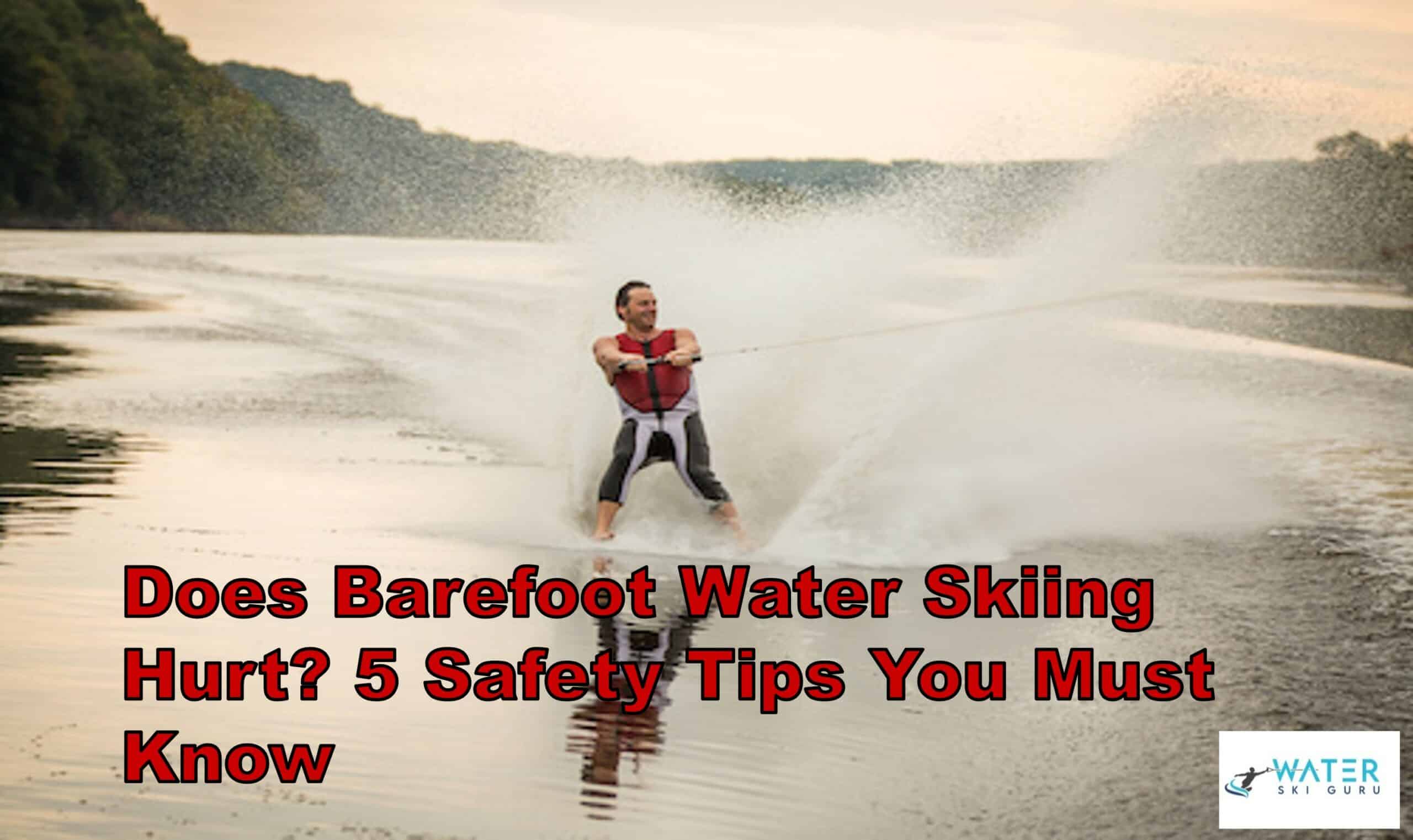Barefooting is waterskiing, but while being barefoot, I mean any sport that involves water running through your feet, sounds delightful, right? Well, it can sound exciting to some people. For others, it can make them anxious and easy to know that there is nothing to cover their feet in the water; it’s just their skin and the water.
So, does barefoot water skiing hurt? Barefoot water skiing does hurt since your feet will be in direct contact with the water while going at high speed. You will feel like your heels walked on something warm and sharp, and you may get bruises if the water is bumpy. However, it’s all about your mentality; the key to barefooting is to focus on how you are performing.
Keep reading to learn more about possible injuries when Barefoot skiing, how fast you need to go to barefoot waterski, and if you need a wet suit to barefoot waterski.
Does Barefoot Water Skiing Hurt?
Barefoot water skiing hurts beginners at first because barefoot skiing usually has a higher speed than regular water skiing. After all, it requires more velocity to maintain the skiers on a plane.
Barefooting needs to be done in a specific way, and usually, any place that rents water skis will teach you the basics and what to do.
At first, you may feel like you’ve walked on something sharp. But, with time, it will get easier.
Of course, the feeling won’t change, but you will get used to it. You will be distracted by many things, such as maintaining your balance and controlling the amount of water spraying on your face from the boat.
Overall, the experience is worth it, and you will be enjoying the moment more than worrying about your feet. You may overthink before skiing, but as soon as you get on the boat and start moving, all of your worries will disappear.
Possible Injuries When Barefoot Water Skiing
Being safe while barefoot water skiing doesn’t only depend on you (the skier). It depends on the team you are going water skiing with, including the boat operator and the observer.
However, the most significant role is still for the skier, as the worst injuries happen when you suddenly fall off your water ski.
Here is a list of the possible injuries that may happen when barefoot water skiing.
- Lacerations to the head and neck
- Concussions
- Ankle strains and sprains
- Shoulder strains and sprains.
- Medial collateral ligament
- Problems with the anterior cruciate ligament
- Damage to cartilage
Few of these conditions will require some time to heal, and it can take more than eight months for you to water ski again.
So focus on not falling and maintaining your body upright while you are water skiing, the falls while barefoot water skiing can lead to the worst injuries you can have water skiing.
It’s also crucial to wear a life jacket during water skiing because if you fall while you are away from the shore, you need to just float in the water till someone comes and gets you. Don’t try to swim; you will tire yourself out, and that’s how people drown.
How Fast Do You Need to Go to Barefoot Waterski?
Barefoot water skiing requires at least 30-45 mph/50-70km/h, and the average speed for water skiing generally is 34 mph.
However, to know how fast you should be going, there is something you need to calculate; you should divide your weight (in pounds) by ten, then add 20 to the number.
For example, if you weigh 145 divided by ten, giving you 14.5, add 20, and you get 34.5 mph, which should be your speed.
How Do You Barefoot Waterski Properly So That It Doesn’t Hurt?
Here is a step-by-step guide to help you properly barefoot waterski, so it doesn’t hurt.
- Stretch before going in the water
- Practice your position when you are still on land
- Your position should be as if you were sitting on a high chair; lean your back, bend your knees, your legs parallel to each other, and your chest out.
- You can repeat as much as you want until you feel comfortable and ready to go into the water.
- Choose the right speed for you so that it doesn’t hurt.
- When the boat starts moving, lay flat on your back in the water while both feet are wrapped around the rope, and the handle should be at your waist level.
- When you are prepared, let the driver know to idle you forward, then take one final breath and lock your head back; the driver should immediately start pulling you out of the water.
- When you are ready to take your feet off the rope, you should put your feet as close to you as possible and, most importantly, keep your heels as close to your butt as possible.
- You should avoid dipping your toes in the water; now, you can put your heels in the water and apply pressure.
How Long Does It Take for Your Feet to Stop Hurting After Barefoot Water Skiing?
Each person can take a different amount of time for their feet to stop hurting after barefoot water skiing.
It would depend on how you skied, your speed, and the type of water; for example, if it is choppy, it would take more time for your feet to stop hurting. It also depends on how sensitive your skin is, so the less sensitive it is, the faster your feet will stop hurting.
However, if you are worried about your feet, you may consider regular skiing. Even though you won’t go at the same speed, you won’t overthink how you will feel afterward.
The pain of barefoot water skiing is usually not worse than just a burning sensation, and if you think you can handle that, then you are good to go.
Safety Tips for Barefoot Waterskiing
Here are the essential safety tips for barefoot waterskiing that I wish someone had advised me when I first started skiing.
- Stretch before and after skiing.
- Start on the right foot.
- Wear your barefoot wetsuit
- Your position is the key to water skiing
- Bring a barefoot boom with you
Tip 1 – Stretch before and after skiing.
Stretch is crucial before and after skiing because, usually, when you go barefoot waterskiing, you wake up with your whole body aching and feeling sore when you go barefoot waterskiing.
Tip 2 – Start on the right foot.
One of the most important steps while barefoot waterskiing is starting on your right foot.
Try sitting on a kneeboard with your feet and whole legs perching the board; when the kneeboard is finally on the water, you can put your feet and allow the boat driver to increase the speed, gradually standing up. Before you know it, you will be barefooting properly.
Tip 3 – Wear your barefoot wetsuit.
The Barefoot wetsuit is your best friend in waterskiing. You won’t know the difference it makes until you try to go barefoot waterskiing without it.
Your wetsuit needs to fit you perfectly, so the water barely enters. You will feel lighter even though the wetsuit has thick padding that helps you glide easily; plus, it offers flotation and protects you if you fall.
Tip 4 – Your position is the key to water skiing.
When you start water skiing, your position is crucial. Try to bend your knees while your legs are parallel, your back should be vertical, and your arms should be relaxed, not tense, and a little bent.
Tip 5 – Bring a barefoot boom with you.
The Barefoot boom is a bar you will hold from your spot to just feet from the boat driver; with it, you can just step off or do anything you would do behind the boat.
Do You Need a Wet Suit to Barefoot Waterski?
It’s best if you wear a wet suit to barefoot waterski; it’s entirely your choice, but you should either wear a life jacket or a wet suit and since the wet suit already has the vest, it’s more recommended.
The wet suit will improve your barefoot waterskiing experience; it protects you from falls and makes your gliding on the water easier.
Related Questions
Do I Need To Stretch Before Waterskiing?
You do need to stretch before waterskiing. It will help you in water, and you won’t feel as much ache in your body afterward. It will also prevent your body from getting too sore after waterskiing, especially if it’s your first time. You should also stretch after waterskiing.
Can You Do Tricks While Barefoot Water Skiing?
You can do many tricks while barefoot water skiing. In barefoot water skiing competitions, there are three events: slalom, tricks, and jump. In the tricks event, you are required to do tricks in just 15 seconds, and the more complicated your trick is, the more points you will get.
Is Wakeboarding Or Water Skiing Easier?
Wakeboarding is easier for beginners because it’s easier to learn. However, water skiing requires more athletic people; that’s why it’s recommended that people considering waterskiing start getting into shape because if you are weak, waterskiing won’t be as easy.
Is Barefoot Waterskiing Hard On Knees?
Barefoot skiing can only be hard on your knees if you fall at high speed (more than 40 mph). Going at that speed can wreak havoc on the joints. That’s why water skiers need to take Precautions while skiing because if this happens, they won’t be able to water ski at all over time.

